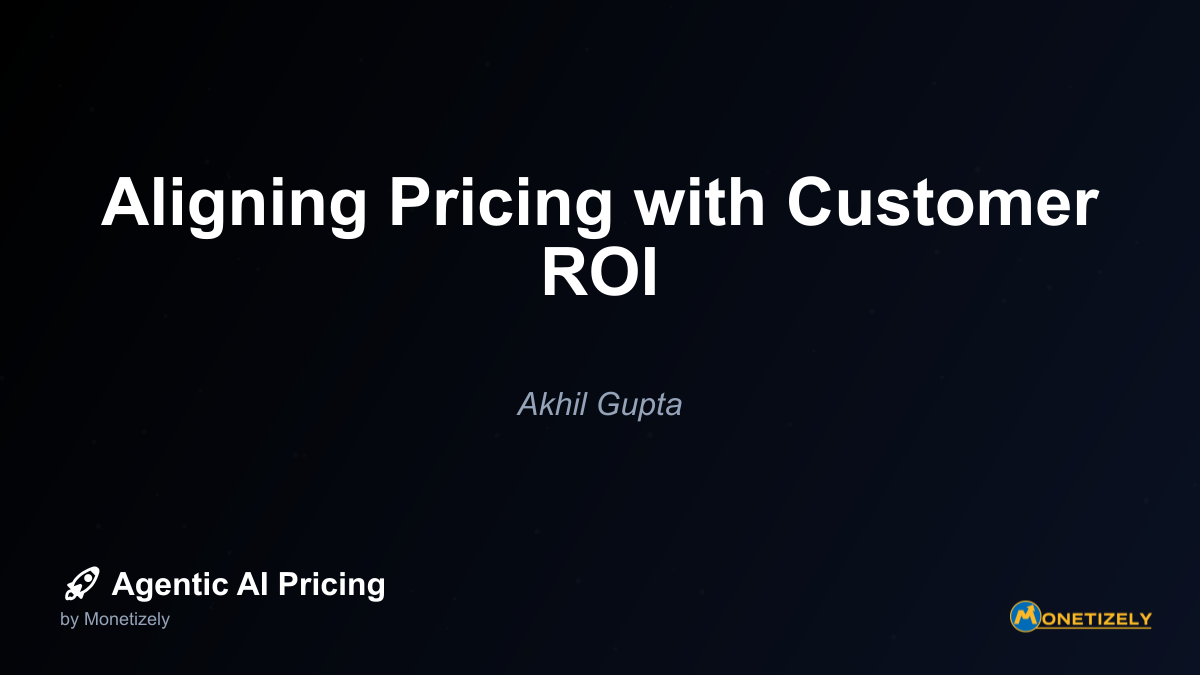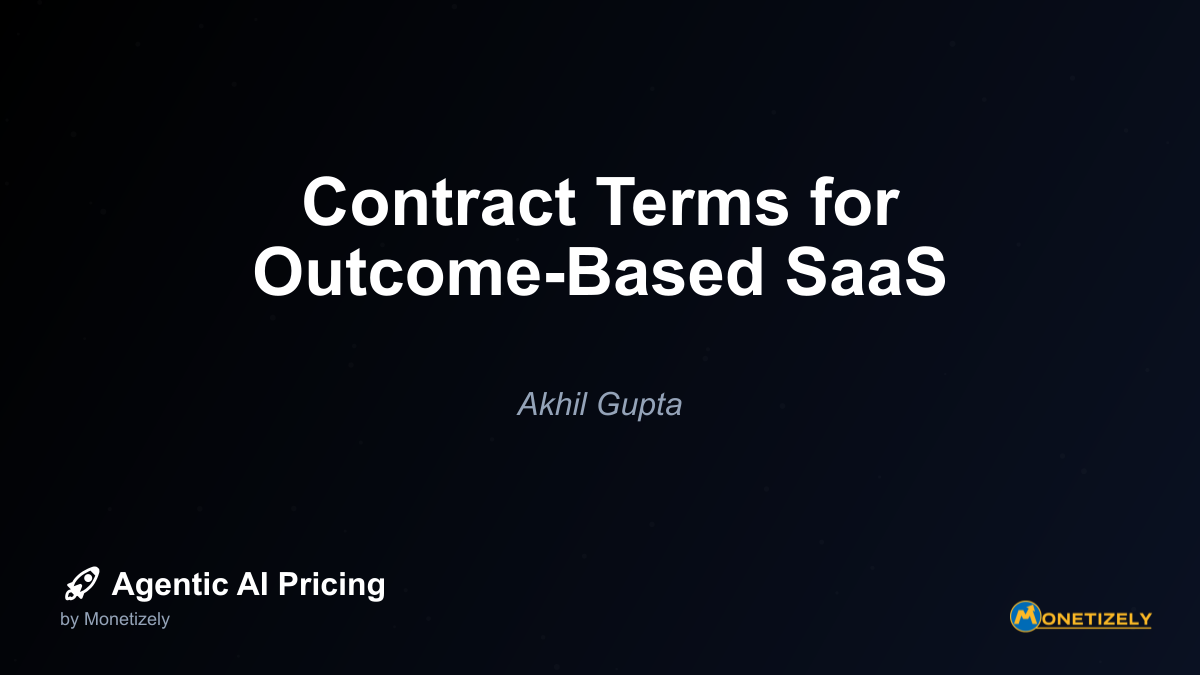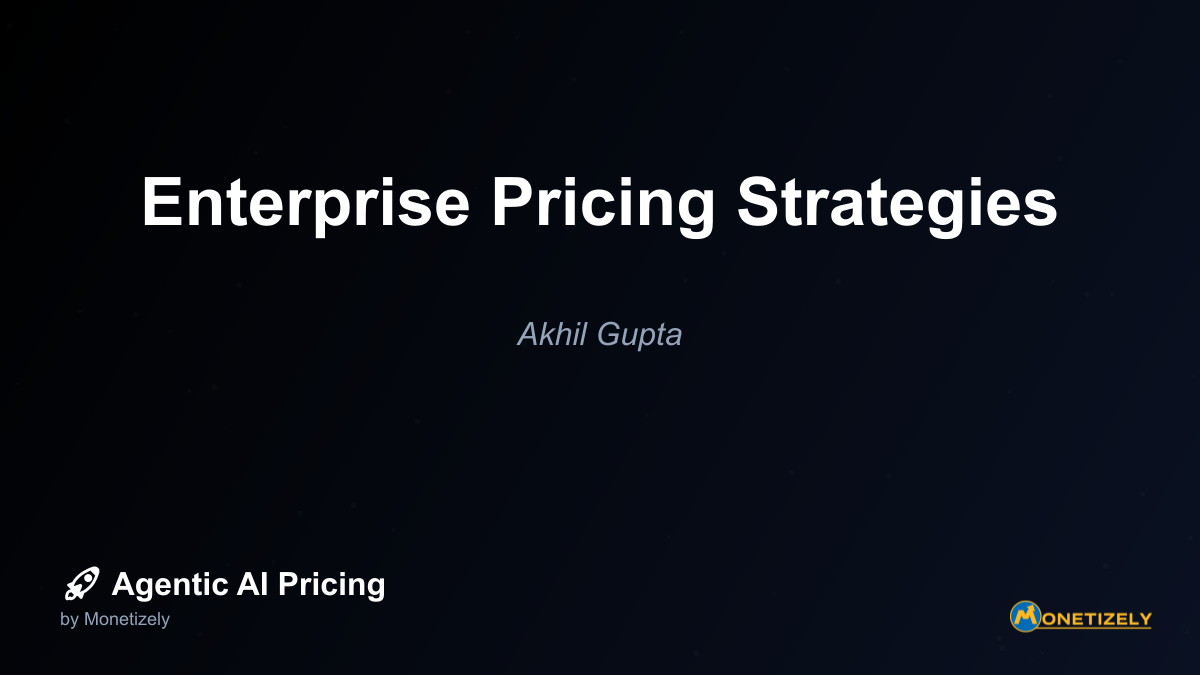· Ajit Ghuman · Pricing Agentic SaaS Products · 7 min read
Bundling Agentic Features into SaaS
AI and SaaS Pricing Masterclass
Learn the art of strategic pricing directly from industry experts. Our comprehensive course provides frameworks and methodologies for optimizing your pricing strategy in the evolving AI landscape. Earn a professional certification that can be imported directly to your LinkedIn profile.

Microsoft Copilot: The Premium Add-On Strategy
Microsoft’s approach to pricing its Copilot for Microsoft 365 offers valuable insights into premium add-on strategies for agentic features. Rather than bundling these AI capabilities into existing Office subscriptions, Microsoft opted for a separate $30/month per-user premium add-on.
This approach reflects several strategic considerations:
Distinct value articulation: By separating Copilot, Microsoft clearly positions it as a transformative capability worth additional investment rather than an incremental feature improvement.
Investment recovery: The substantial development and operational costs associated with Copilot’s advanced AI capabilities necessitated a pricing strategy that could support continued investment.
Segmentation opportunity: The premium pricing creates natural segmentation, allowing Microsoft to target early adopters and high-value use cases initially while maintaining flexibility for broader adoption strategies later.
For more on Microsoft’s approach, see Microsoft’s Copilot Pricing Strategy.
Slack AI: The Tiered Integration Approach
Slack’s approach to integrating AI capabilities demonstrates a different strategy, incorporating AI features across different pricing tiers with increasing sophistication at higher levels:
- Basic tier: Simple AI-assisted search and organization
- Business+ tier: Enhanced AI summaries and more advanced automation
- Enterprise tier: Full suite of AI capabilities including advanced analytics and custom workflows
This tiered approach allows Slack to:
- Create natural upgrade paths as users experience value from basic AI capabilities
- Align AI feature sophistication with broader enterprise needs
- Differentiate pricing tiers beyond traditional feature sets
- Drive adoption through exposure to basic capabilities
The contrast between Microsoft’s and Slack’s approaches highlights how company positioning, existing product maturity, and competitive landscape influence bundling decisions.
Financial Implications of Bundling Decisions
The bundling decision carries significant financial implications that extend beyond immediate revenue considerations:
Customer Lifetime Value Impact
Bundling decisions directly influence customer lifetime value through several mechanisms:
Adoption velocity: Bundled features typically see faster adoption, accelerating time-to-value and potentially reducing churn.
Expansion revenue: Separately sold features create explicit expansion opportunities but may face adoption friction.
Retention effects: Features that deliver substantial value once adopted can significantly improve retention, regardless of bundling approach.
Cross-selling opportunities: Premium agentic features can create natural paths to other products or services in your ecosystem.
The optimal strategy balances immediate revenue capture against long-term value creation, with different approaches appropriate at different stages of market maturity.
Cost Structure Considerations
The underlying cost structure of agentic features should heavily influence bundling decisions:
Fixed vs. variable costs: Features with high fixed costs but low marginal costs benefit from maximizing adoption through bundling, while those with significant variable costs may require separate monetization.
Usage predictability: Features with unpredictable usage patterns create financial risk when bundled without appropriate guardrails.
Development amortization: The substantial investment in agentic capabilities must be amortized across an appropriate customer base.
Operational scalability: Features requiring substantial human oversight or intervention may not scale economically when broadly bundled.
Companies should model multiple scenarios to understand how different bundling approaches affect unit economics across various adoption patterns.
Implementation Guide: Executing Your Bundling Strategy
Regardless of the bundling approach selected, successful implementation requires careful attention to several critical elements:
Value Communication
The success of any bundling strategy depends on effective value communication:
Quantify ROI: Develop clear ROI models that demonstrate the value of agentic features, whether bundled or separate.
Use cases over features: Focus messaging on concrete use cases and outcomes rather than technical capabilities.
Social proof: Leverage early adopters to demonstrate value and create case studies that resonate with target segments.
Competitive positioning: Clearly articulate how your approach to agentic features compares to competitive offerings.
Value communication should be tailored to different stakeholders, with technical decision-makers, business users, and financial approvers each requiring distinct messaging.
Pricing Structure Design
The specific pricing structure must align with your bundling strategy:
For bundled features:
- Consider usage limits or fair use policies to protect margins
- Design tiering that aligns feature sophistication with willingness to pay
- Create clear upgrade paths as users experience value
For separate features:
- Align pricing metrics with value creation (per user, per workflow, outcome-based)
- Consider promotional periods to accelerate adoption
- Design bundle discounts for customers adopting multiple premium features
For hybrid approaches:
- Establish clear boundaries between bundled capabilities and premium extensions
- Create seamless upgrade experiences at the moment of value realization
- Consider credits or token systems that provide flexibility across features
The pricing structure should balance simplicity for customers with the flexibility needed to capture appropriate value.
Transition Strategies
For companies with existing products adding agentic capabilities, thoughtful transition strategies are essential:
For transitioning from bundled to separate:
- Provide generous grandfathering for existing active users
- Create compelling migration incentives
- Communicate the increased investment supporting the change
For transitioning from separate to bundled:
- Provide clear migration paths for existing customers
- Consider loyalty benefits for early adopters
- Communicate the strategic rationale for the change
Any transition should prioritize existing customer relationships while positioning the change as beneficial for all stakeholders.
Measuring Success: KPIs for Bundling Decisions
Evaluating the success of bundling strategies requires a comprehensive set of metrics that go beyond simple revenue measurements:
Adoption Metrics
- Feature activation rate: Percentage of eligible users who activate the agentic feature
- Time to first value: How quickly users experience meaningful value from the feature
- Usage depth: Extent to which users leverage the full capability of the feature
- Usage frequency: How often users engage with the feature
- Adoption velocity: Rate at which adoption spreads across users or organizations
Financial Metrics
- Revenue per user: How the bundling decision affects overall revenue per user
- Margin impact: Effect on gross margins considering usage-based costs
- Expansion revenue: Additional revenue from upsells or cross-sells
- Customer acquisition cost (CAC) impact: Effect on acquisition costs and payback period
- Customer lifetime value (CLV) impact: Changes in retention and expansion over customer lifetime
Customer Experience Metrics
- Net Promoter Score (NPS) impact: Effect on overall satisfaction and recommendation likelihood
- Feature-specific satisfaction: User satisfaction with the specific agentic capabilities
- Support volume: Changes in support requests related to the feature
- Retention impact: Effect on customer retention rates
- Competitive win/loss impact: Influence on competitive positioning and win rates
Comprehensive measurement across these dimensions provides the insights needed to refine bundling strategies over time.
Future Trends in Agentic Feature Bundling
As agentic AI continues to evolve, several emerging trends will influence bundling decisions:
1. Outcome-Based Pricing
As agentic features deliver increasingly measurable business outcomes, pricing models will evolve from access-based to outcome-based approaches. This shift will create new opportunities for value-based pricing that transcends traditional bundle-or-separate decisions.
2. Ecosystem-Wide Bundling
The growing interconnectedness of software ecosystems will drive bundling decisions that span multiple products and vendors. Companies will increasingly consider how their bundling strategies align with broader ecosystem dynamics.
3. Dynamic Bundling Based on Usage Patterns
Advanced analytics will enable more sophisticated approaches to dynamic bundling, where the bundling configuration adapts based on observed usage patterns and value realization. This approach will maximize both adoption and revenue capture.
4. Convergence of Human and AI Services
As agentic AI capabilities blur the line between software and services, bundling decisions will increasingly incorporate human-in-the-loop elements, creating new hybrid models that combine technology access with expert services.
Conclusion: Strategic Imperatives for Agentic Feature Bundling
The decision to bundle or separately monetize agentic features represents a critical strategic choice that extends far beyond pricing considerations. The optimal approach balances immediate revenue capture against long-term market position, customer adoption, and competitive differentiation.
As you navigate this decision, consider these core principles:
Start with value creation: Ground your bundling decision in a clear understanding of how and for whom your agentic features create value.
Consider the full customer journey: Evaluate how your bundling approach affects the entire customer journey from acquisition through expansion and retention.
Balance short and long-term objectives: Recognize the trade-offs between immediate revenue capture and long-term market position.
Build in flexibility: Design approaches that can evolve as market understanding matures and competitive dynamics shift.
Measure comprehensively: Implement robust measurement frameworks that capture the full impact of your bundling decisions.
In the rapidly evolving landscape of agentic AI, the companies that succeed will be those that thoughtfully align their bundling strategies with their broader business objectives, customer needs, and market position. By approaching this decision strategically rather than tactically, you can create sustainable competitive advantage in the age of autonomous AI.
Co-Founder & CEO
Ajit is the author of Price To Scale, a top book on SaaS Pricing and is the Founder of Monetizely. Ajit has led and worked in pricing and product marketing at firms like Twilio, Narvar and Medallia. His work has been featured in Forbes and VentureBeat. Ajit regularly consults with software companies from Seed stage to post-IPO on pricing strategy. Ajit is also a highly-rated co-instructor for 'The Art of SaaS Pricing and Monetization' on Maven.
Pricing Strategy Audit
Let our experts analyze your current pricing strategy and identify opportunities for improvement. Our data-driven assessment will help you unlock untapped revenue potential and optimize your AI pricing approach.




